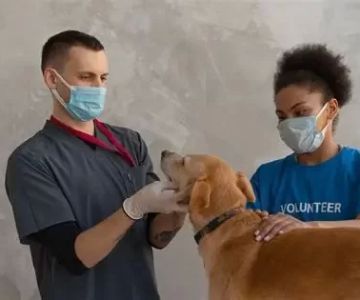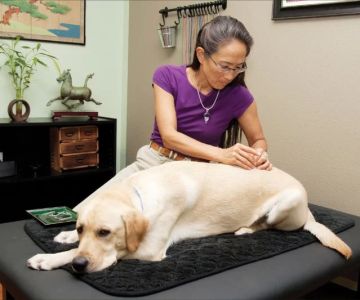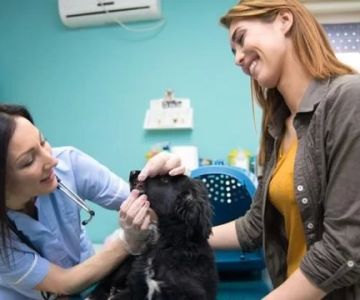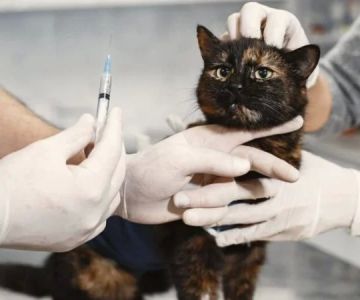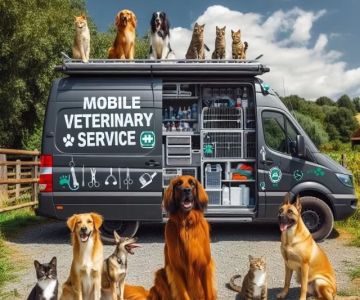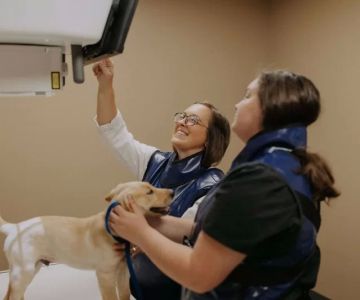How to Become a Wildlife Veterinarian: Steps to Follow for a Rewarding Career
- Introduction to Wildlife Veterinary Medicine
- What Qualifications Are Needed to Become a Wildlife Veterinarian?
- Training and Education Requirements for Wildlife Veterinarians
- Essential Skills for Wildlife Veterinarians
- Career Path and Opportunities in Wildlife Veterinary Medicine
Wildlife veterinarians are some of the most dedicated professionals in the veterinary field, providing care to animals in their natural habitats, rescue centers, or even in research environments. As a passionate animal lover, I’ve always been fascinated by the role veterinarians play in ensuring the health and conservation of wildlife. Becoming a wildlife veterinarian is a highly specialized career that requires a unique set of skills and qualifications. If you’ve ever wondered how to become a wildlife veterinarian, you’re in the right place. This guide will walk you through the necessary steps, from educational requirements to hands-on training, that will help you embark on this rewarding career path.
1. Introduction to Wildlife Veterinary Medicine
Wildlife veterinarians are responsible for diagnosing, treating, and preventing diseases in wild animals. This often includes working with animals in zoos, wildlife sanctuaries, and rehabilitation centers, as well as conducting fieldwork in natural habitats. Unlike traditional veterinarians who focus primarily on domestic animals, wildlife veterinarians often deal with exotic and endangered species that require specialized care and attention.
Wildlife veterinary medicine is an exciting and impactful field that combines medical knowledge with a passion for conservation. I’ve always admired the veterinarians who work tirelessly to preserve wildlife and ensure that endangered species get the care they need. This career requires a strong commitment to animal welfare, an understanding of ecology and conservation, and the ability to work in often challenging and unpredictable environments.
2. What Qualifications Are Needed to Become a Wildlife Veterinarian?
To become a wildlife veterinarian, you need to meet certain educational and professional requirements. The path to becoming a wildlife vet is similar to that of a traditional veterinarian, but with additional training and experience specific to wildlife medicine. Below are the key qualifications required:
2.1 Educational Requirements
Just like any veterinarian, becoming a wildlife vet starts with obtaining a veterinary degree. In most countries, this means completing a veterinary medicine program that is accredited by the relevant regulatory body. I’ve learned that the path usually begins with a bachelor’s degree in a related field like biology, zoology, or animal science, followed by admission to a veterinary school. Veterinary school programs typically take 5 to 7 years to complete, where students receive training in general veterinary practices, as well as specialized areas like surgery, pharmacology, and diagnostics.
2.2 Additional Wildlife-Specific Education
In addition to the core veterinary education, aspiring wildlife veterinarians must seek further training in wildlife medicine. This can include specialized courses in wildlife anatomy, conservation biology, and field-based veterinary practices. I’ve seen many wildlife veterinarians take additional certifications or attend specialized workshops to gain expertise in handling wild animals and understanding the specific needs of endangered species.
2.3 Internships and Volunteering
Hands-on experience is crucial in the wildlife veterinary field. Many veterinarians gain valuable experience through internships and volunteer opportunities at wildlife rescue centers, zoos, or research facilities. These experiences allow future wildlife vets to work directly with exotic animals, learning about their behavior, anatomy, and specific health challenges. I’ve heard stories from wildlife vets who started out as volunteers, helping to care for injured animals before eventually securing a full-time position in the field.
3. Training and Education Requirements for Wildlife Veterinarians
Training to become a wildlife veterinarian requires a mix of classroom learning, practical experience, and often fieldwork. Here’s a breakdown of the essential training steps:
3.1 Classroom Learning
The foundation of veterinary medicine is built in the classroom, where students learn the essential skills required to diagnose and treat animals. For wildlife veterinarians, this includes studying topics like wildlife diseases, the biology of different species, and the challenges that come with treating animals in the wild. I’ve seen that while a general veterinary degree provides broad knowledge, the focus on wildlife medicine comes in through electives, field studies, and specialized training programs offered by certain veterinary schools.
3.2 Hands-On Field Training
Field training is an essential part of becoming a wildlife veterinarian. Many veterinary schools offer opportunities to gain hands-on experience in wildlife conservation areas, zoos, and animal hospitals that specialize in exotic animals. This training helps aspiring wildlife vets understand how to work in challenging environments, from handling large animals to understanding the unique health risks faced by wild species. Whether in a wildlife sanctuary or a remote rainforest, fieldwork provides invaluable insight into the complexities of working with animals in the wild.
3.3 Continuing Education
The field of wildlife medicine is constantly evolving, and ongoing education is essential to staying current with new treatments, conservation strategies, and veterinary technologies. Continuing education through workshops, conferences, and online courses is a must for wildlife veterinarians. Many of them also choose to specialize further, gaining certifications in specific areas such as wildlife surgery, zoo medicine, or conservation management.
4. Essential Skills for Wildlife Veterinarians
Becoming a wildlife veterinarian requires not just formal education but a unique skill set. In addition to medical knowledge, wildlife veterinarians need to have a variety of practical and interpersonal skills to be effective in their roles:
4.1 Problem-Solving Skills
Wildlife veterinarians often deal with unpredictable situations. Whether treating an injured animal in the wild or diagnosing a disease in a rare species, the ability to think critically and problem-solve is essential. I’ve seen wildlife vets use their knowledge creatively, coming up with solutions to complex medical problems that require both veterinary expertise and an understanding of environmental factors.
4.2 Strong Communication Skills
Communication is another crucial skill for wildlife veterinarians. Whether they are working with other veterinarians, animal care staff, or communicating with the public about wildlife conservation efforts, clear and compassionate communication is key. Veterinary professionals must be able to educate animal caretakers, explain treatment plans to the public, and sometimes handle sensitive conversations regarding the future of endangered species.
4.3 Physical Stamina
Working with wildlife can be physically demanding. From capturing animals in the wild to performing surgeries on large species, wildlife veterinarians often find themselves in physically challenging situations. I’ve seen wildlife vets who need to be quick on their feet, as they often need to act fast to save an animal’s life or help a species in need of urgent care.
5. Career Path and Opportunities in Wildlife Veterinary Medicine
The career path for a wildlife veterinarian is full of opportunities, but it requires dedication and passion. There are several different career paths a wildlife vet can pursue, depending on their interests and goals:
5.1 Working in Zoos and Aquariums
Many wildlife veterinarians work in zoos, aquariums, and wildlife parks, where they care for exotic species and help manage animal populations. This path offers the opportunity to work with a wide variety of animals and contribute to global conservation efforts. I’ve met wildlife vets who find this work incredibly fulfilling, as they can work with species they are passionate about and have a direct impact on their well-being.
5.2 Wildlife Conservation and Research
Wildlife veterinarians can also work in conservation efforts, often conducting fieldwork in wildlife reserves and national parks. They may work with endangered species, helping to ensure their survival through medical care, research, and education. I’ve spoken to several veterinarians who work with NGOs, dedicating their careers to the conservation of animals in their natural habitats. This is one of the most rewarding career paths in wildlife veterinary medicine, as it allows professionals to contribute directly to the preservation of biodiversity.
5.3 Wildlife Rehabilitation Centers
Another career opportunity for wildlife veterinarians is working in wildlife rehabilitation centers, where they provide medical care to injured or orphaned animals. This path often involves a hands-on approach, where wildlife vets treat a variety of injuries and diseases while helping animals recover and return to the wild. This is the route I’m most passionate about, as it allows veterinarians to give direct care to animals in need and make a tangible difference in their recovery.
Becoming a wildlife veterinarian is a challenging but incredibly rewarding career path for those who are passionate about animal care and conservation. By following the necessary educational requirements, gaining hands-on experience, and developing the right skills, you can embark on this meaningful journey. If you're looking to explore veterinary medicine further or need more guidance on your path to becoming a wildlife veterinarian, visit Scent Snob for expert recommendations and resources to help you succeed in this exciting field.



